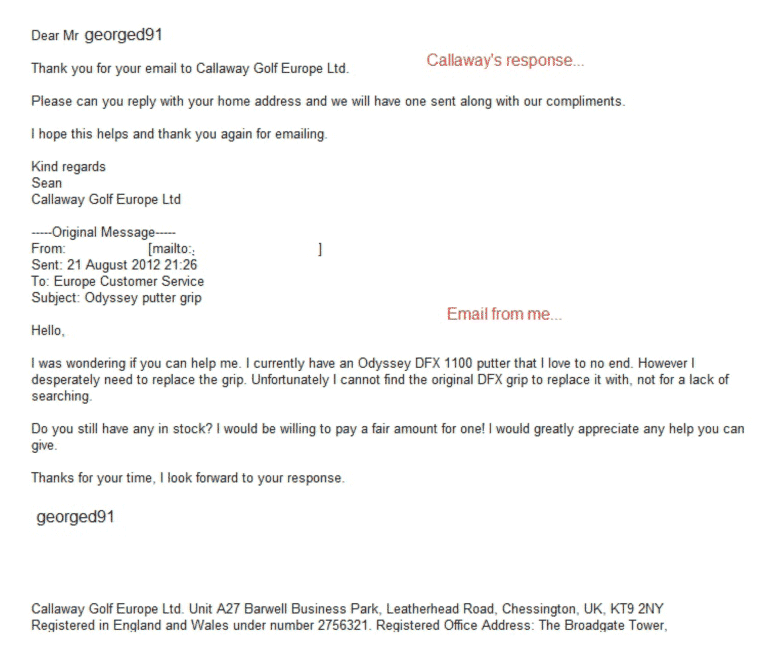
Customer service email response templates
Customer service is an important building block for the success of any company. It is expensive for a business to survive solely off of new business so it’s incredibly important to make customer retention a priority. Keeping customers loyal allows your company to grow and loyalty stems from great customer service.
Data shows that the average customer will spend 67 percent more in his or her third year as a customer compared to the first year. That’s two-thirds more money for far less work. That is a strong incentive to keep your customers coming back year after year.
So, how do you keep your existing customers?
You give them a great experience every time, treat them with respect, and make them feel special!. All of this can be done with the right customer service tools and support. In today’s digital world, much of customer service is conducted online, often via live chat or support emails.
In this article we will cover:
- Benefits of using a customer service email template
- How templates can accidentally hurt your business
- Email templates for specific customers
Let’s get started honing your customer service emails so that your business can thrive.
Benefits of using a customer service email template
A great customer service rep takes each interaction on a case-by-case basis. However, oftentimes they are asked the same questions over and over. For these situations having a template makes a lot of sense for the following reasons.
Benefit 1: Templates save customer support time
With templates as a starting block, your customer support team is able to spend less time typing the same thing over and over and be able to help more customers. Of course, you will not have a template for every question but having them for the most common questions allow your customer support staff to optimize their time to help a great number of customers.
Benefit 2: Templates ensure the company messaging is consistent with your brand
When on a support team you get asked similar questions frequently, templates can assure that everyone on your team is giving the same solutions and responses to those frequent questions.
Having synced up answers will save you and your customers a lot of headaches in the future.
Let’s look at an example.
Say two different customers email your company complaining about a new product release. You don’t have a customer service email template to use, so your support staff answers using their own wording. In the example below, take a look at how varied your employees’ responses could be without a template. Then, imagine how the customer might react to each one.
Bad support response:
Dear Alex,
We are sorry to hear you hated the product. We stated clearly what it would do on the packaging, so it is not our place to make things right. Perhaps you would like to try [PRODUCT] instead?
Thank you,
Amanda
Good support response:
Dear Bonnie,
I’m sorry you are not satisfied with the new product. It is our intention to make items that make your life easier, not harder! I will pass along your feedback to our design team. I hope you’ll consider giving us another chance. Please feel free to use code WEARESORRY to get 50% off your next purchase.
Thank you for your business.
Warmly,
Charles
You can’t guarantee friendly and helpful customer support, but having a framework for your staff to follow can greatly improve their ability to help customers. A template makes it much harder for employees to fall out of line, and your company messaging stays consistent.
Though there are many great reasons to use customer support email templates, it’s wise to be wary of their drawbacks as well.
3 Ways email templates can hurt your business
Templates can save you time and future headaches, but they can also hurt your reputation if you’re not careful. Because templates are generally a “one-size-fits-all” solution, some discrepancies will need keen attention to ensure the templates don’t backfire on you. Below are some of the ways email templates might cause harm to your company.
1) Blank customization fields
Nothing enrages a customer quite like feigned empathy. When using a template, there are often blank fields into which the service rep is supposed to put personalized information to make the customer feel more valued. These fields are vital to making the email feel personal, and they save lots of time.
Imagine sending a scathing email to a company about a bad experience, only to receive an email back addressed, “Hello [CUSTOMER NAME]”. It will be even tougher to win back that customer’s trust, let alone their business. To avoid this mess, create a checklist for your staff to follow before they hit send.
2) Typos & grammar errors
While your service reps might fill in all the blanks correctly, they may not catch any typos in the template. People using email templates expect them to be perfect examples, thus they’re not looking to edit for grammar mistakes.
If one typo slips through and ends up being sent out to every single customer that request support, you immediately come off as sloppy and/or inexperienced. Customer trust can be lost with something as simple as a “hell” instead of “hello,” so be careful.
One way to sidestep this mistake is to have your marketer or copywriter proofread all the templates before they are sent out to the rest of the staff. Someone who’s trained to find these mistakes will do a much better job of ensuring quality. If, somehow, a mistake does slip through, and someone notices it, make sure your staff knows to report any mistakes immediately so no further harm can be done.
3) Does your employee care?
Email templates are only helpful if the person sending them genuinely cares about the customer. If the customer service rep doesn’t truly want to help the customer succeed, that apathy will show, and your company will have to deal with the flack.
To make sure email templates work in your favor and not against you, simply keep these warnings in mind when implementing them. The benefits of email templates should far outweigh the drawbacks if you use them correctly.
Customer service email templates for different types of customers
Depending on the types of support requests you receive, below are some email templates for various types of customers you will likely come across.
How to respond to angry customers
If you work in customer service it is now unusual to hear something similar to this: “I hate your product/service and I’m very upset.”
Though angry customers can often seem inconsolable at first, remember that this person initially wanted to give you their business, but something went wrong. It’s your customer service rep’s job to help right that wrong, and it can be tactfully done through a well-written support email.
Responding to an angry customer via email is very similar to the way you would respond to a negative review. Be empathetic, don’t place blame, and offer to make things right.
Example support email:
“Hi [CUSTOMER NAME],
Thank you for your email and for bringing this to our attention. I am sorry that you’re disappointed with [PRODUCT OR SERVICE NAME]. Could you please let me know what specific issues you’ve encountered? I’d love to help where I can and pass along your suggestions to our team, but I need just a bit more information before doing so.
I understand how it can be frustrating [TO SIGN UP FOR A SERVICE OR PURCHASE A PRODUCT] and not have it meet your expectations, so hopefully, we can get this sorted out for you. If not, I’ll be happy to issue you a refund.
Thank you for your business,
[REP NAME]
How to respond to happy customers
When a happy customer emails you with praises, count your lucky stars! This is a wonderful indication that you’re doing things right, and you should do everything you can to keep this customer raving about your company to their friends. Ensure your customer service team responds as they should, and ask them to leave a positive online review.
Always be sure to thank the reviewer, be personal, and include a call-to-action. A great example of a company going above-and-beyond to keep an existing customer is a golf brand, Callaway
in the below email:
The customer posted his story on Reddit and said, “I want to buy more Callaway products.
Lots more.” You can win a loyal customer like this from your own support emails to happy customers.
Example support email:
Hi [CUSTOMER NAME]
I’m so happy to hear you are pleased with [PRODUCT OR SERVICE NAME]. [COMPANY NAME] strives to deliver the best customer experience, and it makes our day to hear we have accomplished that.
We count ourselves lucky to have you as a customer and would be so happy if you could please share your experience on Google or Nextdoor. It’s people like you that inspire us. We also have a pretty great loyalty program if you’d like to be rewarded for your recommendations as well.
We appreciate you.
Thank you again!
[REP]
How to respond to high maintenance customers
No matter how much support you offer, there will always be the needy customers. These types of customers constantly need hand-holding, but you know that you can’t waste a ton of time catering to their specific needs. To respond to these types of customers, it’s important to remember that they likely feel entitled to the extra attention they are asking for. This could be a delicate situation. The below email template could keep their graces without wasting too much time.
Example email template:
Hi [CUSTOMER NAME],
Thank you for your email. We would love to help solve your issue. Please note that in order to give your situation ample time and care, there are a few things we will need from you to help with the process.
-Your order number
-Best time to call you
Is [PHONE NUMBER] a good number to call? We can resolve your issue over the phone so that there are no miscommunications and we can get things settled as soon as possible.
I appreciate your help and look forward to resolving your issue.
Thank you,
[REP]
How to respond to customers who have feedback
There is often going to be people who think they can do your job better than you or tweak your product to greatly improve it. Instead of reacting harshly to a well-meaning email that lists unwarranted suggestions for improvement, use the opportunity to cultivate a stronger customer relationship.
Obviously, this customer cares about your business enough to try to help it improve, so use customer feedback as a way to grow and perhaps if you get enough feedback on something specific you know what changes your customers want.
Check these email templates on asking for reviews and customer feedback to employ smart damage control while making the customer feel valued.
Example email template:
Dear [CUSTOMER NAME],
We are so happy you’ve chosen to purchase [PRODUCT NAME] from us. We appreciate you taking the time to send us feedback. As a way for us to keep track of customer suggestions, we would love for you to fill out this feedback survey. That way, your comments get to the right people and we can improve your experience moving forward.
Thank you for your business.
Warmly,
[REP]
Conclusion
As you can see, email templates can really come in handy, especially for sticky customer service situations. If you need to keep your branding and messaging consistent while managing support emails efficiently, email templates are a savvy tool.
Plus, these formatted documents will help you keep customers happy, resolve their problems, and encourage them to continue using your business. Acquiring a new customer can cost a company anywhere between five to 25 times more money than simply retaining current customers, so don’t undermine the value of a good customer service email template!
Watch your online reputation transform with Broadly



